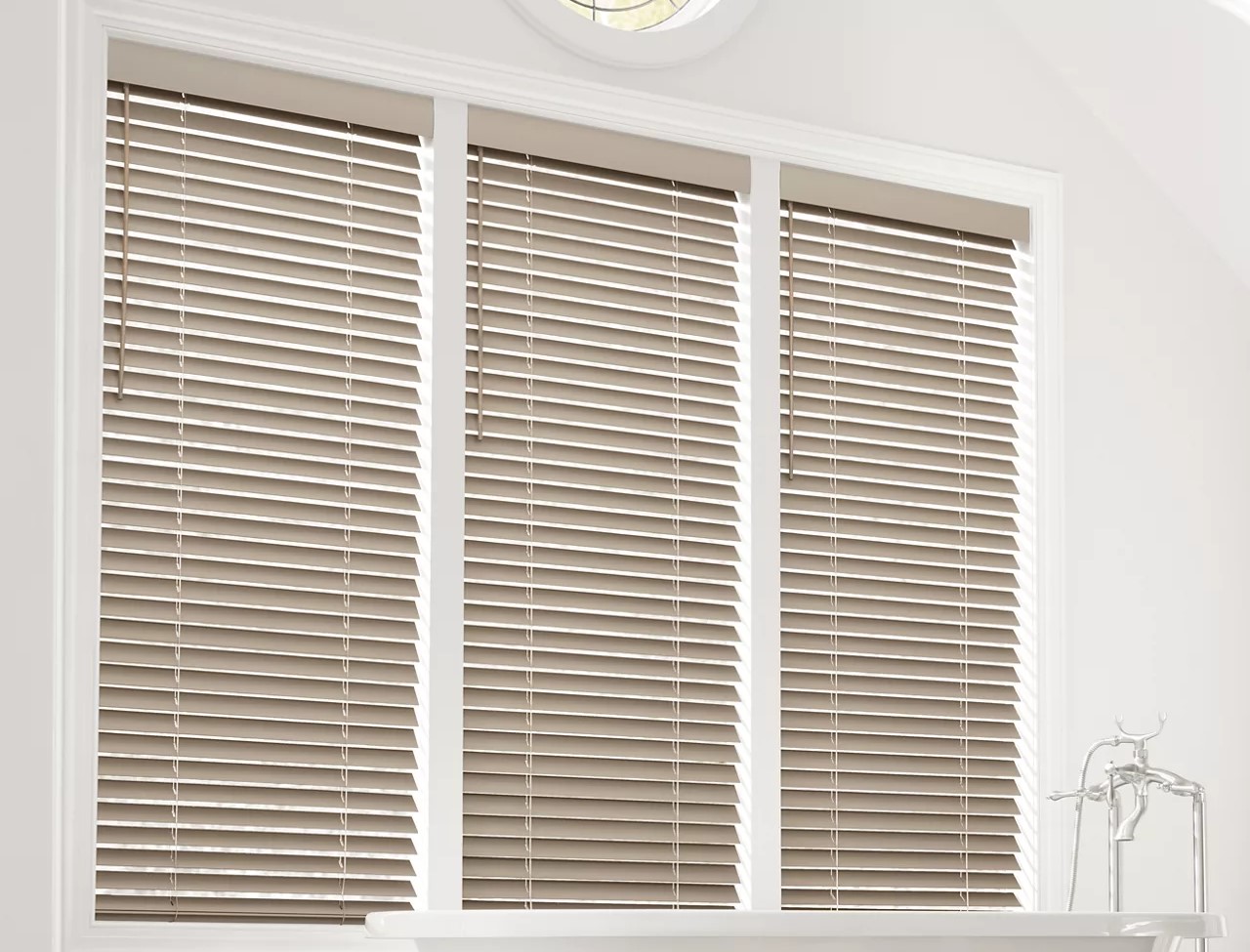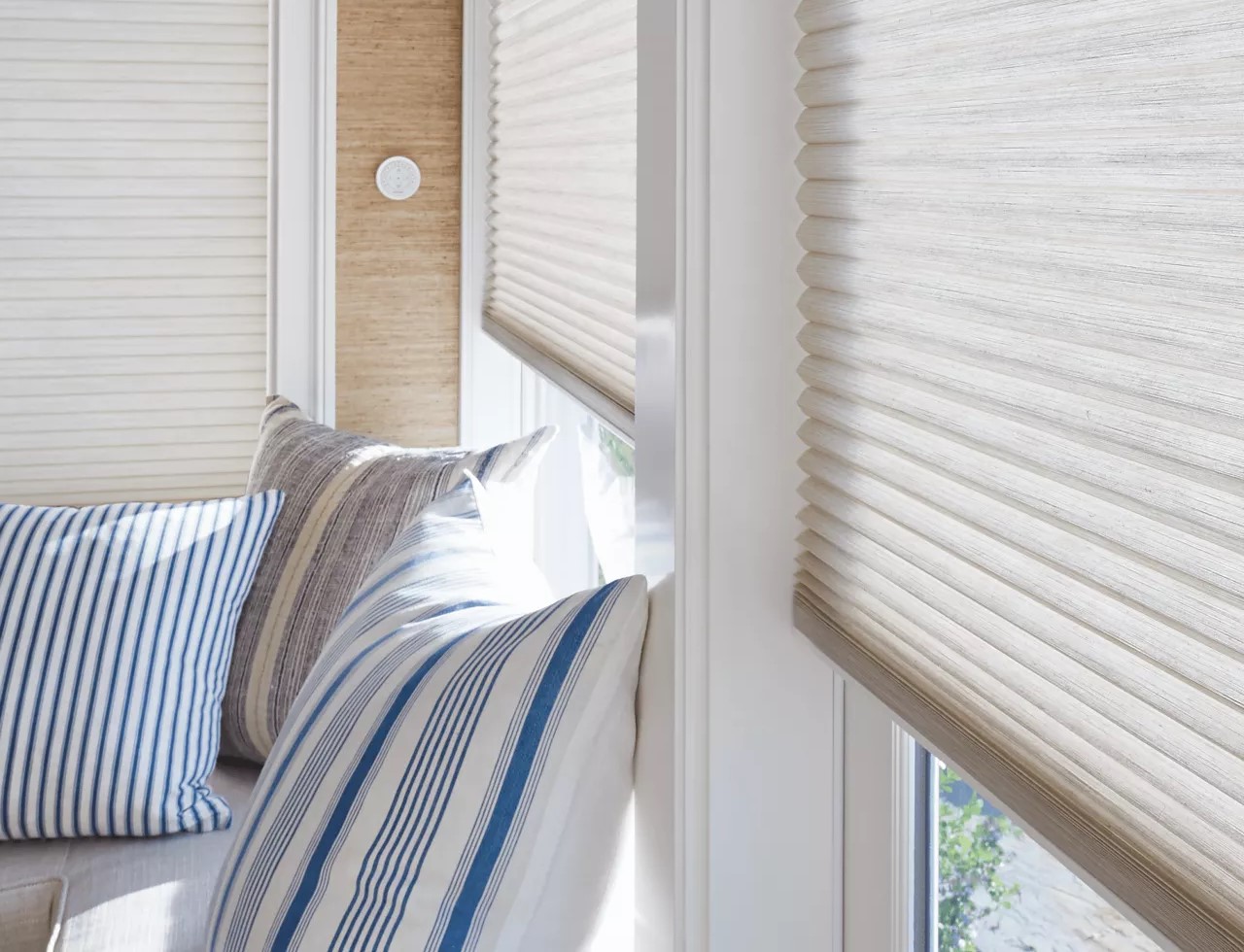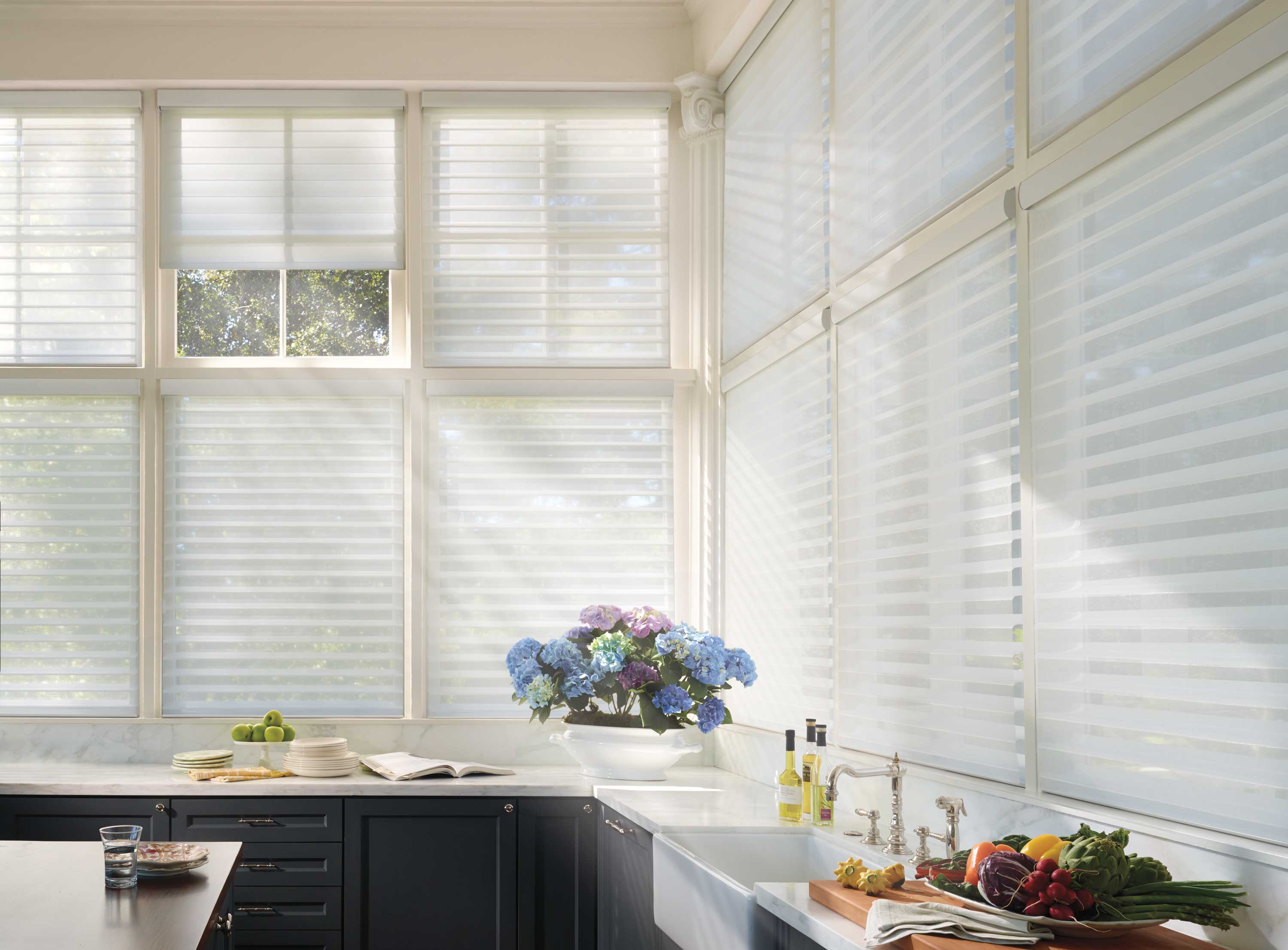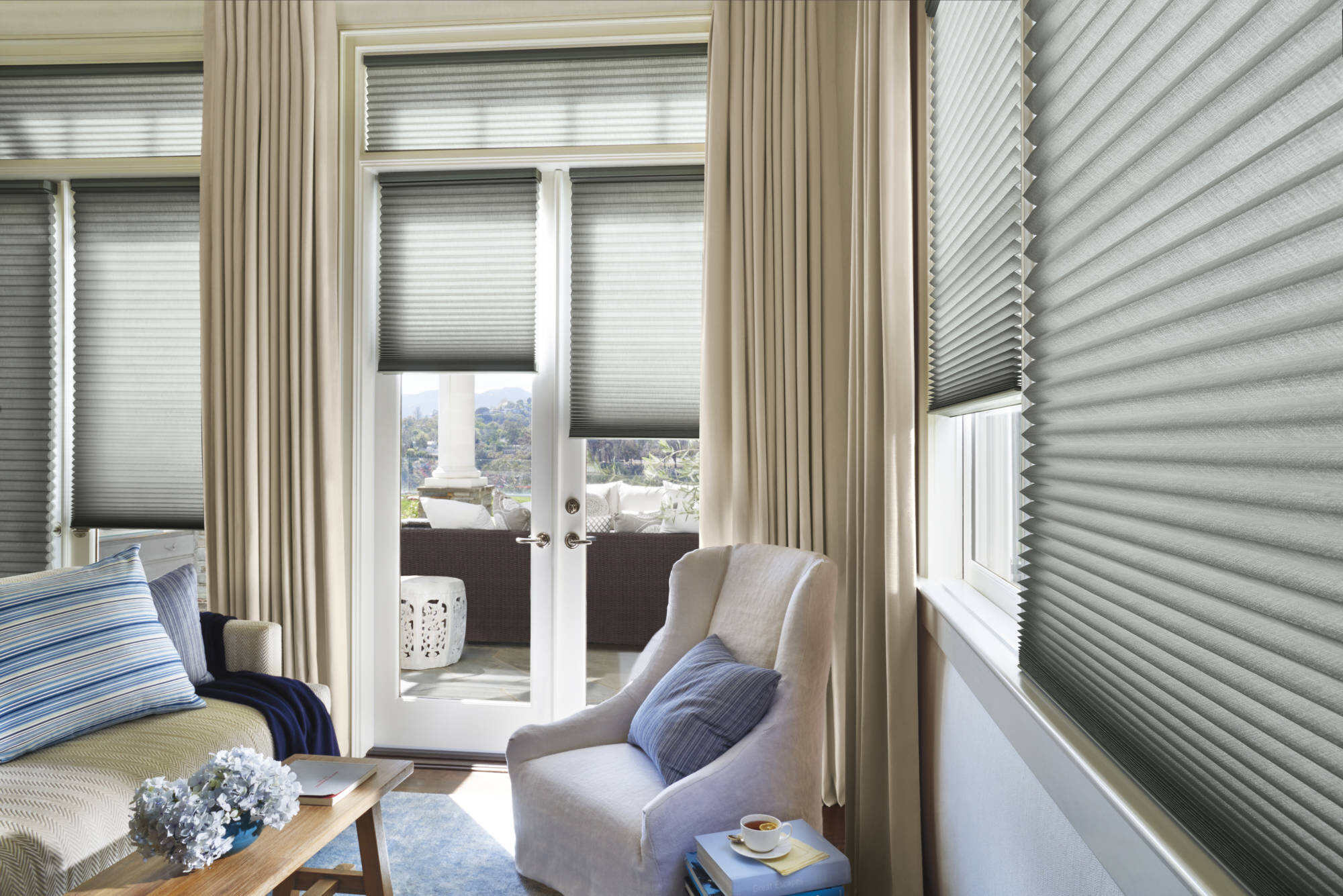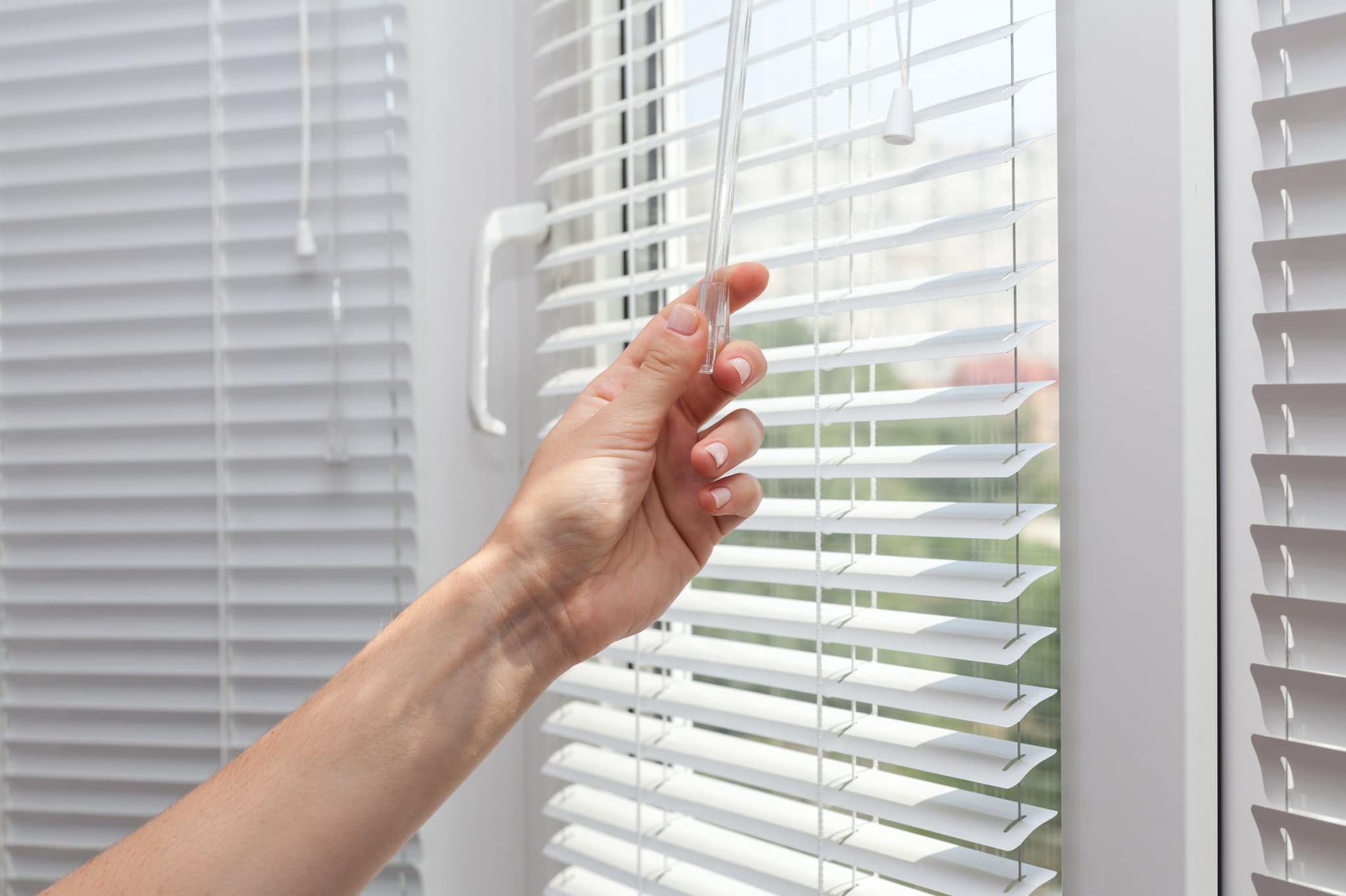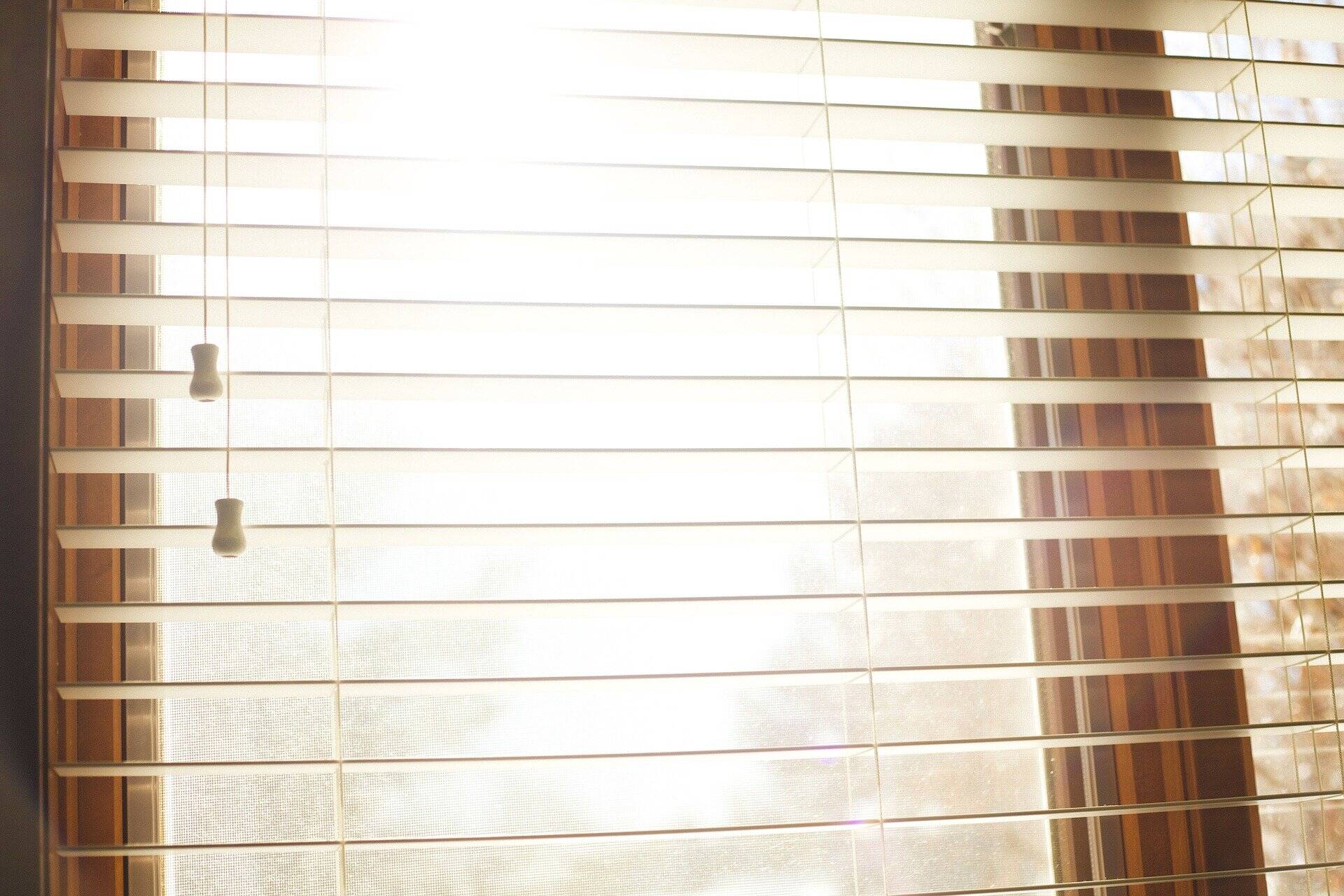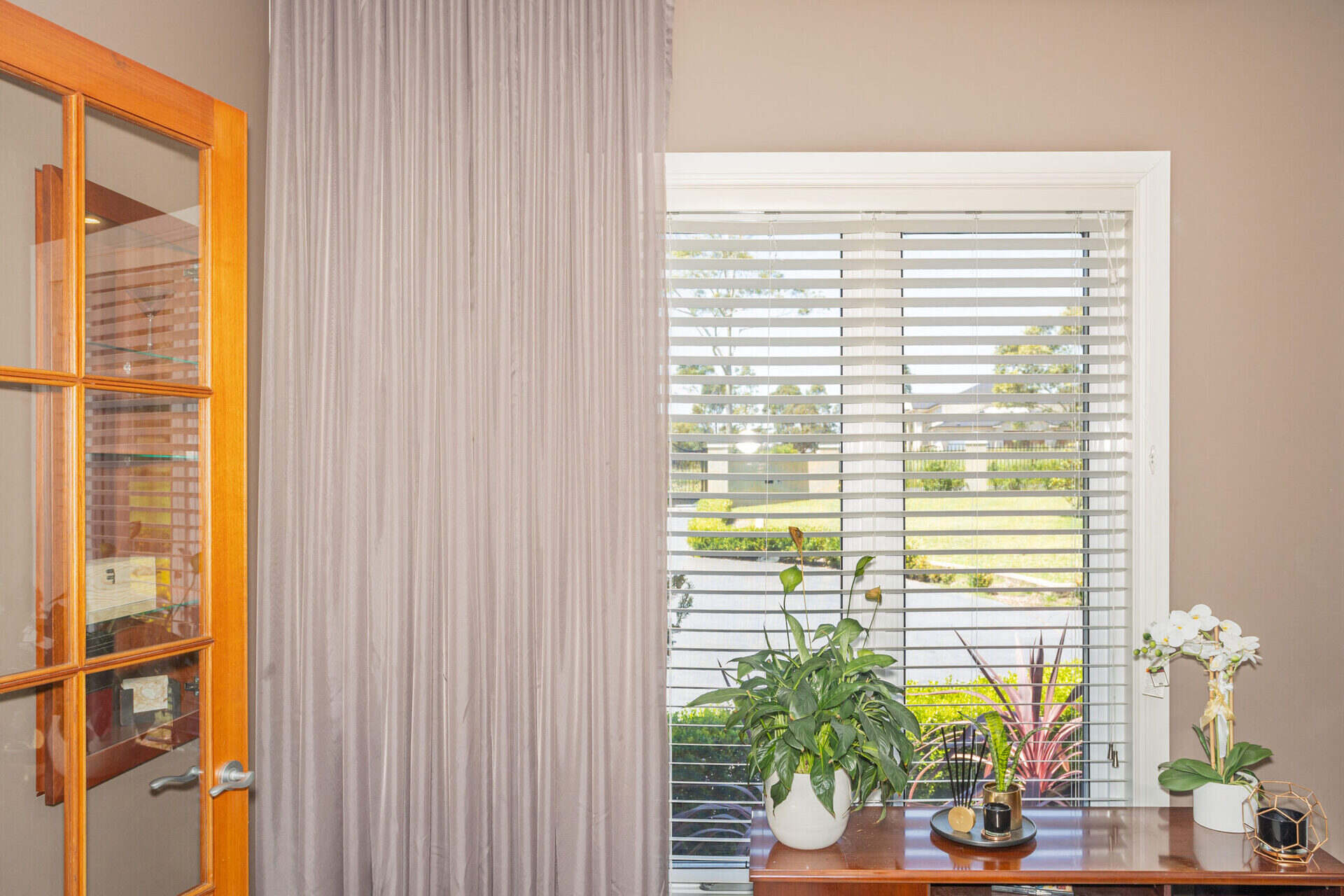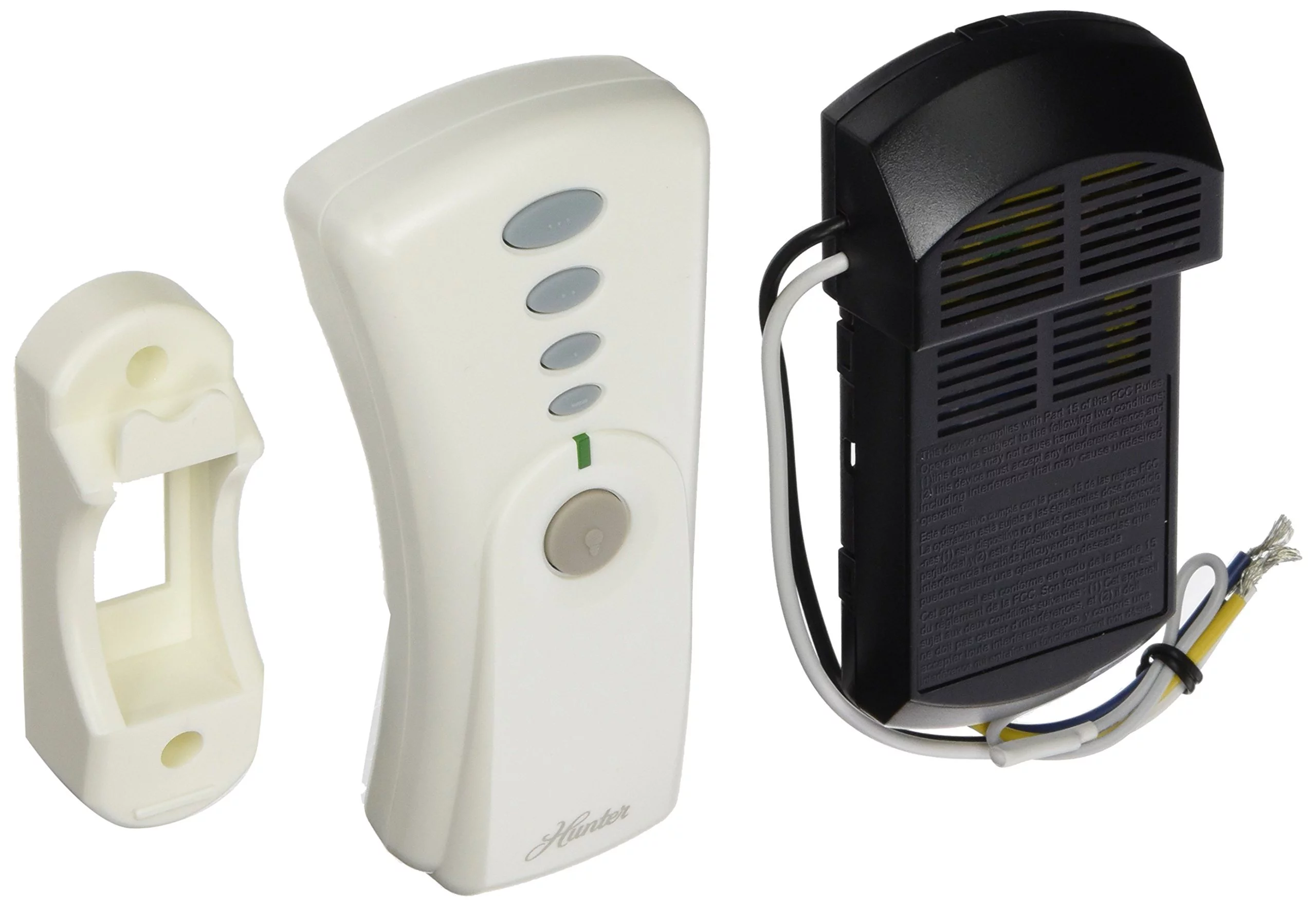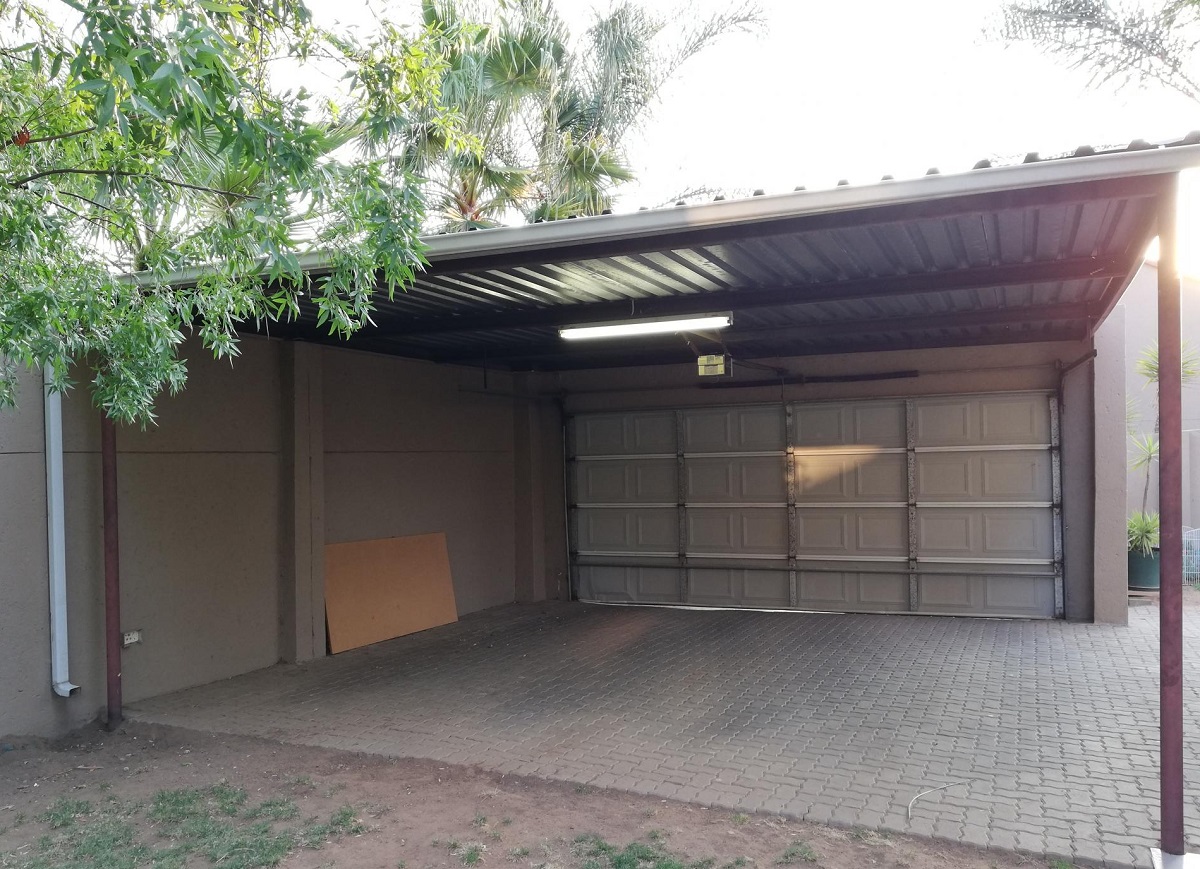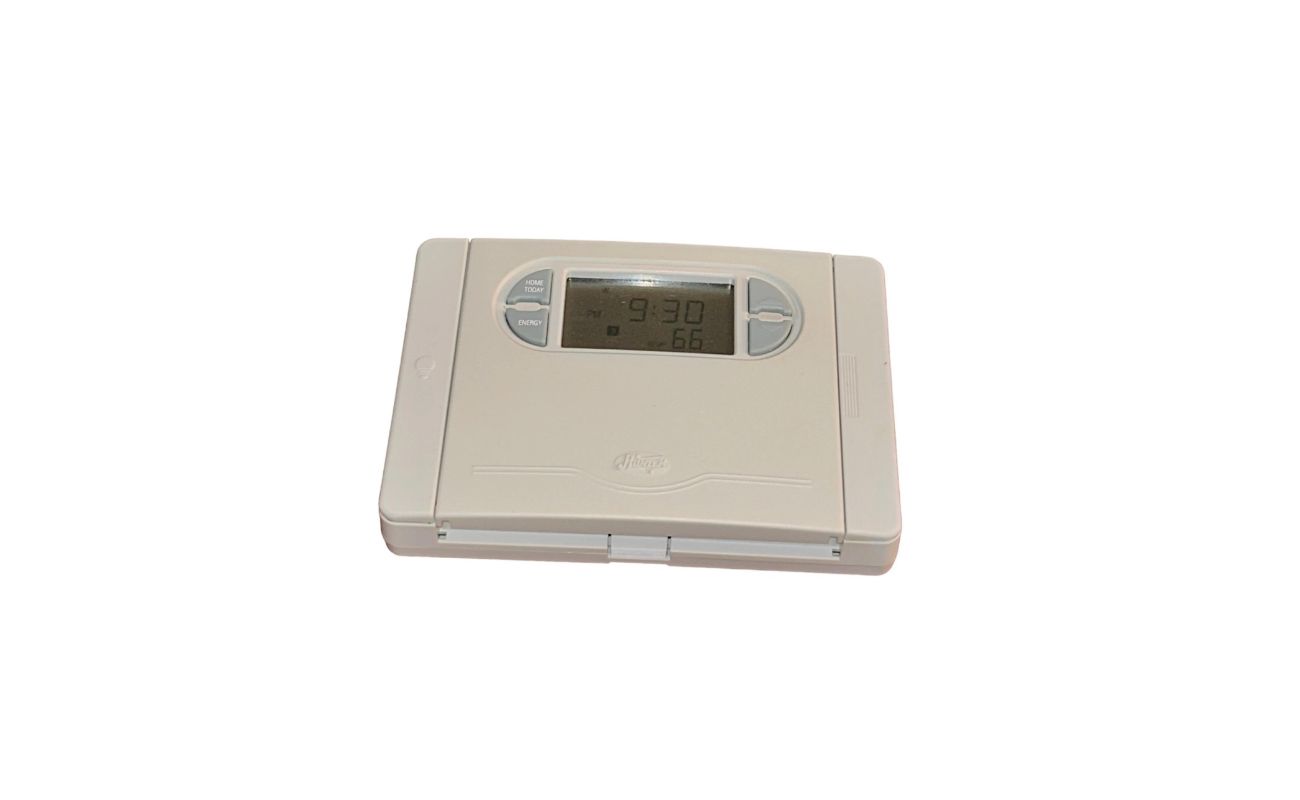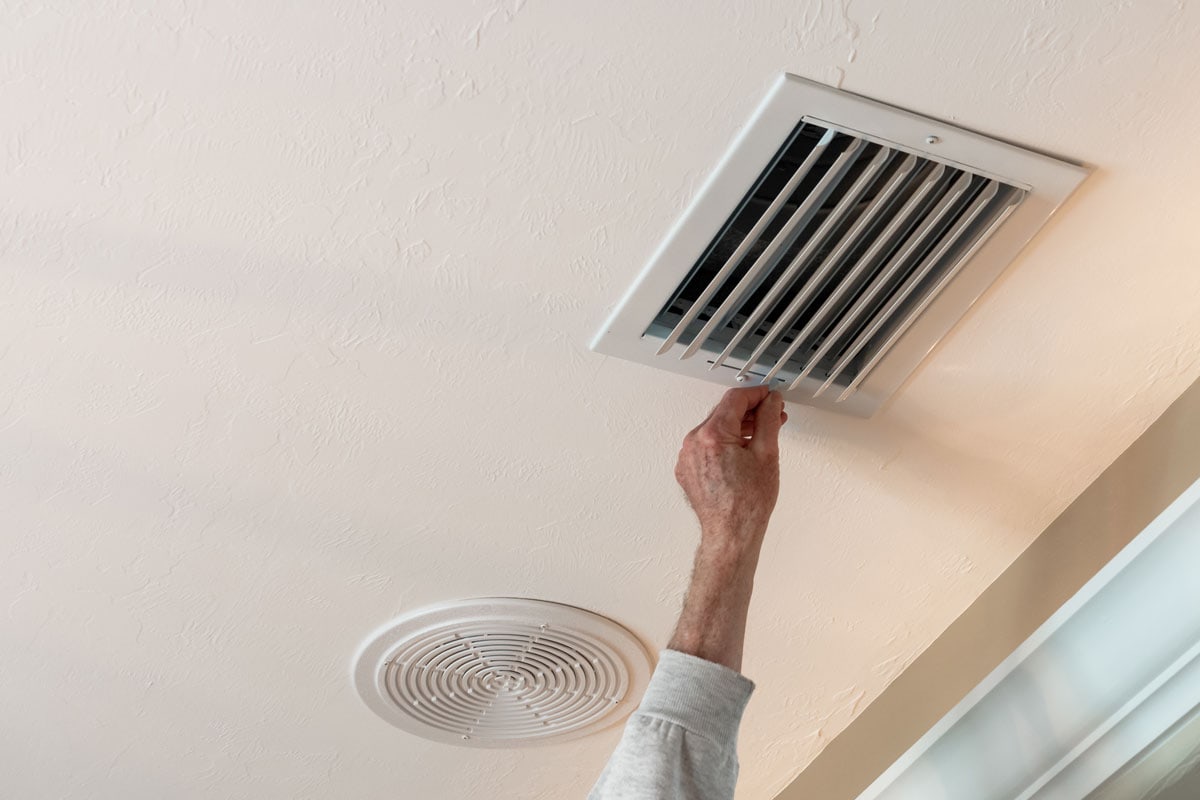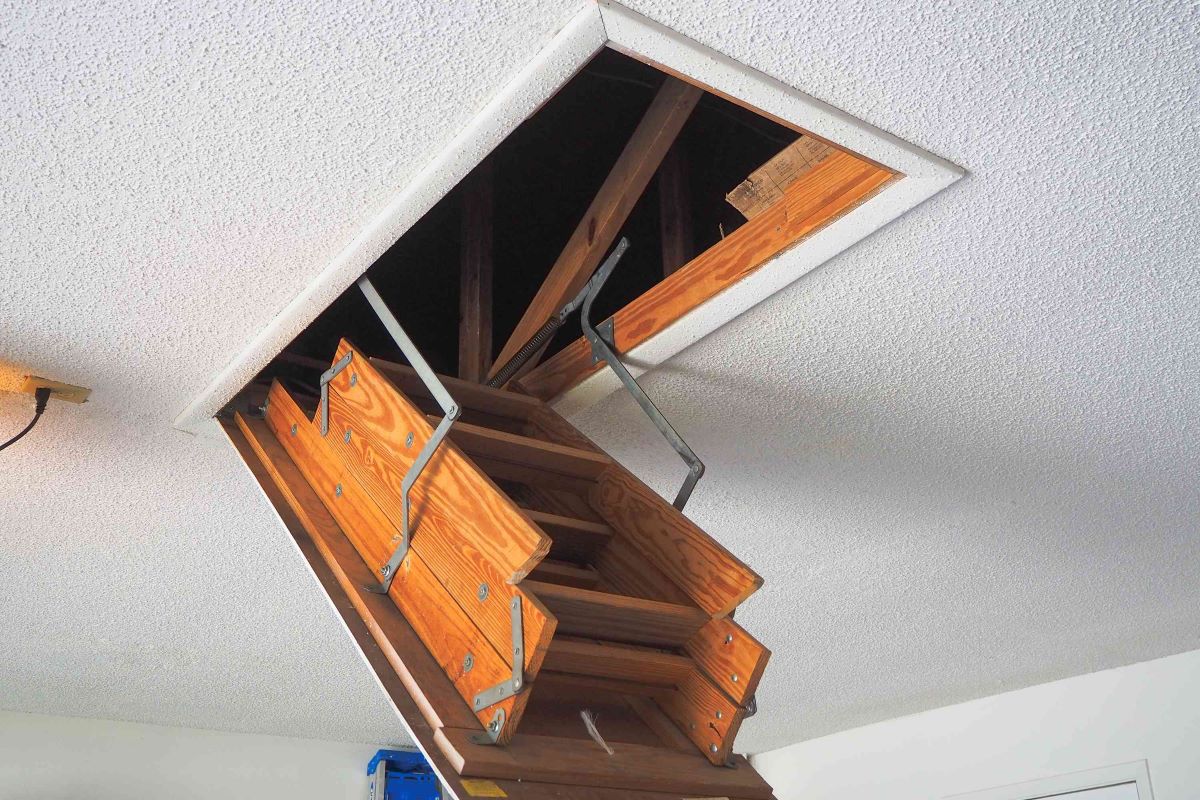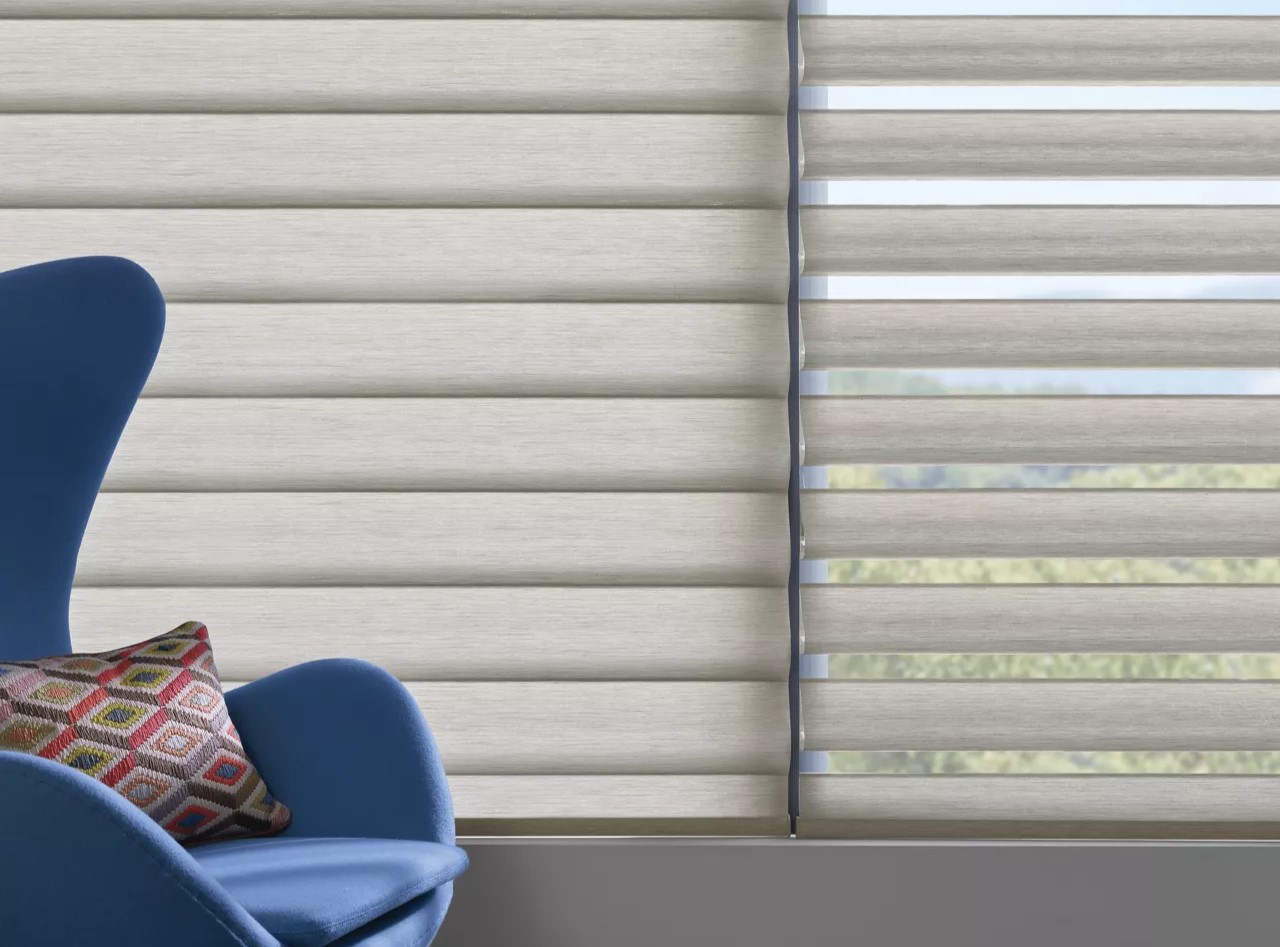

Articles
How To Close Hunter Douglas Blinds
Modified: January 18, 2024
Discover helpful articles on how to efficiently close your Hunter Douglas blinds. Find step-by-step instructions and expert tips to ensure a seamless and convenient process.
(Many of the links in this article redirect to a specific reviewed product. Your purchase of these products through affiliate links helps to generate commission for Storables.com, at no extra cost. Learn more)
Introduction
Hunter Douglas blinds are a popular choice for homeowners due to their elegant design, quality craftsmanship, and functionality. These blinds offer both privacy and light control, making them ideal for any room in your home. However, there may come a time when you need to close your Hunter Douglas blinds completely, whether it’s to create a cozy ambiance, block out sunlight, or ensure maximum privacy.
In this article, we will guide you through the process of closing Hunter Douglas blinds effectively. We will cover everything from understanding the different blind types to troubleshooting issues that may arise during closure. By the end of this article, you will have the knowledge and confidence to close your Hunter Douglas blinds effortlessly.
Before we dive into the details, it’s important to note that Hunter Douglas offers a range of blind types, including roller blinds, cellular shades, vertical blinds, and more. Each blind type has its own unique mechanism and closure method. So, understanding your blind type is crucial for successfully closing your Hunter Douglas blinds.
Now let’s delve into the different blind types offered by Hunter Douglas and learn how to identify them in your own home.
Key Takeaways:
- Understanding the specific type of Hunter Douglas blinds in your home is crucial for effective closure. From roller blinds to wood blinds, each type requires a unique method to achieve the desired level of privacy and light control.
- Properly preparing and maintaining your Hunter Douglas blinds is essential for a smooth closure process. From cleaning and checking for obstructions to troubleshooting common issues, taking care of your blinds ensures their longevity and optimal functionality.
Read more: Who Carries Hunter Douglas Blinds
Understanding Hunter Douglas Blinds
To effectively close your Hunter Douglas blinds, it’s essential to have a clear understanding of the different blind types available. This knowledge will help you determine the appropriate closure method for your specific blinds. Here are some of the most common Hunter Douglas blind types:
- Roller Blinds: Roller blinds consist of a single piece of fabric that wraps around a roller mechanism. They can be easily adjusted by pulling on a chain or using a motorized control system. To close roller blinds, simply pull the fabric down until the desired level of privacy or light control is achieved.
- Cellular Shades: Cellular shades, also known as honeycomb blinds, are constructed with multiple layers of fabric that create internal air pockets. These air pockets provide excellent insulation, making cellular shades energy-efficient. To close cellular shades, gently pull the bottom rail downwards to align the fabric cells and block out light.
- Vertical Blinds: Vertical blinds feature individual slats that hang vertically from a track. They are commonly used for large windows or sliding glass doors. To close vertical blinds, simply rotate the control wand or chain to align the slats and close off the light.
- Wood Blinds: Wood blinds offer a classic and timeless look. They are made of real wood or faux wood materials and feature horizontal slats that can be tilted open or closed. To close wood blinds, simply rotate the tilt wand or cord to achieve your desired level of privacy.
- Pleated Shades: Pleated shades have a similar design to cellular shades, but with a different pleat pattern. They are made from a single piece of fabric that folds accordion-style as you raise or lower them. To close pleated shades, lower the fabric until it covers the window completely.
Now that you have a better understanding of the different Hunter Douglas blind types, you can accurately identify the blinds in your home and proceed to prepare them for closure. This preparation step is crucial for ensuring a smooth and efficient closure process. Let’s explore how to do that in the next section.
Assessing the Blind Type
Now that you have familiarized yourself with the different types of Hunter Douglas blinds, it’s time to assess the specific blind type you have in your home. By correctly identifying your blind type, you can determine the most effective method for closing them.
To assess the blind type, start by examining the appearance and structure of your blinds. Check for any distinguishing features or mechanisms that are characteristic of a particular blind type. Here are some key factors to consider when assessing your blinds:
- Design: Look at the overall design of the blinds. Are they made of a single piece of fabric like roller blinds, or do they have individual slats like wood blinds?
- Mechanism: Observe the mechanism used to operate the blinds. Do they have a chain, control wand, or cord? How do you adjust the position of the blinds?
- Orientation: Consider the orientation of the blinds. Are they horizontal like wood blinds or pleated shades, or are they vertical like vertical blinds?
- Materials: Take note of the materials used for the blinds. Are they made of fabric, wood, faux wood, or another material?
- Size and Shape: Consider the size and shape of the blinds. Do they cover a large window or sliding glass door, or are they smaller and fit standard-sized windows?
By carefully evaluating these factors, you should be able to determine the specific type of Hunter Douglas blinds you have in your home. This knowledge is crucial for closing the blinds effectively. Each blind type has its own closure method, so understanding your blind type will help you achieve the desired light control and privacy.
Once you have identified your blind type, you can proceed to the next step: preparing the blinds for closure. This step involves ensuring that the blinds are clean, free of any obstructions, and in good working condition. We will discuss the preparation process in the following section.
Preparing for Closure
Before closing your Hunter Douglas blinds, it’s important to properly prepare them to ensure a smooth and effective closure. Preparing the blinds involves a few essential steps that will help optimize their performance and longevity. Here’s what you need to do:
- Clean the Blinds: Start by cleaning the blinds to remove any dust or debris that has accumulated. Use a soft cloth, feather duster, or a vacuum cleaner with a brush attachment to gently clean the slats or fabric. This will not only improve the appearance of the blinds but also ensure that they operate smoothly.
- Check for Obstructions: Inspect the blind mechanism and track for any obstructions that could hinder the closure process. Look for any tangled cords, bent slats, or debris that may prevent the blinds from closing properly. If you notice any issues, gently untangle cords, straighten slats, and remove any obstructions.
- Inspect the Operating Mechanism: Examine the operating mechanism of the blinds to ensure that it is in good working condition. Check for any loose or broken parts, and make any necessary repairs or replacements. This will ensure that the blinds operate smoothly and securely during closure.
- Adjust the Tension: Some blinds, such as roller blinds, may have a tension adjustment mechanism. If the blinds feel too loose or too tight when opening or closing, locate the tension adjustment device and make the necessary adjustments to achieve the desired tension level.
- Test the Closure: Finally, test the closure of the blinds to ensure they operate smoothly and provide the desired light control and privacy. Open and close the blinds multiple times to check for any issues or irregularities. If you notice any problems, refer to the troubleshooting section later in this article for possible solutions.
By following these preparation steps, you can ensure that your Hunter Douglas blinds are clean, free of obstructions, and in optimal condition for closure. This will not only enhance their performance but also prolong their lifespan, allowing you to enjoy them for years to come.
Now that your blinds are properly prepared, you are ready to proceed with the closure process. In the next section, we will guide you through the specific steps for closing different types of Hunter Douglas blinds effectively.
When closing Hunter Douglas blinds, use the tilt wand to rotate the slats closed, then lower the blinds using the lift cord or motorized controls. Be gentle to avoid damaging the blinds.
Closing Hunter Douglas Blinds
Now that your Hunter Douglas blinds are prepared and in good working condition, it’s time to close them to achieve your desired level of light control and privacy. The closure process will vary depending on the type of blinds you have. Here are the specific steps for closing different types of Hunter Douglas blinds:
- Roller Blinds: To close roller blinds, simply pull down on the chain or activate the motorized control to lower the fabric. Continue pulling until the desired level of closure is achieved. For maximum privacy, lower the blinds all the way down to cover the window completely.
- Cellular Shades: To close cellular shades, gently pull the bottom rail downwards while keeping it parallel to the window. This will align the fabric cells and close the shades. Adjust the position of the bottom rail until you achieve the desired degree of closure.
- Vertical Blinds: Close vertical blinds by rotating the control wand or chain. By doing so, you will align the slats in a closed position, blocking out light and providing privacy. Rotate the wand or chain until the slats are parallel to each other and covering the window fully.
- Wood Blinds: To close wood blinds, rotate the tilt wand or cord in a clockwise direction. This will tilt the slats downward, blocking out light and offering privacy. Adjust the tilt until the desired level of closure is achieved.
- Pleated Shades: Close pleated shades by gently lowering the fabric, accordion-style, until it fully covers the window. This will block out light and provide privacy. Make sure the shades are lowered evenly and smoothly for an even closure.
Remember to close your Hunter Douglas blinds gently and slowly to avoid any damage to the blind material or mechanisms. Take your time to ensure that the blinds are positioned correctly and securely closed.
Once you have closed your blinds, take a moment to admire the transformed ambiance and appreciate the enhanced privacy and light control that Hunter Douglas blinds provide. However, if you encounter any issues during the closure process or notice that your blinds are not functioning as expected, don’t worry. We will address common troubleshooting tips in the next section.
Read more: How To Use Hunter Douglas Blinds
Troubleshooting Closure Issues
While closing Hunter Douglas blinds is usually a smooth and hassle-free process, there may be instances when you encounter issues or challenges. Here are some common closure issues and troubleshooting tips to help you resolve them:
- Blinds Not Closing Completely: If your blinds are not closing all the way, check for any obstructions or tangled cords that may be preventing them from reaching their full closure. Make sure the blinds are properly aligned and any obstacles are cleared. Adjust the tension if necessary to ensure a proper closure.
- Blinds Closing Unevenly: If your blinds are closing unevenly, it could be due to misaligned or damaged slats. Examine the slats to see if any are bent or out of place. Gently straighten them if possible or consider replacing them. Check the mechanism and ensure it is functioning properly to ensure an even closure.
- Blinds Stuck or Difficult to Close: If your blinds are stuck, not moving smoothly, or difficult to close, there may be an issue with the mechanism. Check for any debris or dirt that may be interfering with the smooth operation of the blinds. Clean the mechanism if necessary and lubricate any moving parts to ensure they move freely.
- Motorized Blinds Not Responding: If you have motorized blinds and they are not responding to commands, first check if the remote control or control panel has functional batteries. Ensure that the blinds are properly connected to a power source. If the issue persists, refer to the manufacturer’s instructions or contact customer support for further assistance.
- Excessive Light Leak: If you notice significant light leak around your closed blinds, especially in the case of cellular shades or roller blinds, double-check that the blinds are completely closed and aligned properly. If the light leak persists, consider installing blackout curtains or adding additional window treatments to further block out light.
If you encounter any other unique issues while closing your Hunter Douglas blinds, consult the specific product manual or reach out to Hunter Douglas customer support for guidance. They can provide specialized advice for troubleshooting and resolving any blinds-related issues.
Remember that regular maintenance and periodic cleaning of your blinds can help prevent common closure issues. Additionally, treating your blinds with care and ensuring they are properly adjusted and maintained will contribute to their longevity and optimal functionality.
Now that you are equipped with troubleshooting tips, you can confidently address any closure issues that may arise during the operation of your Hunter Douglas blinds.
Conclusion
Closing Hunter Douglas blinds is a simple yet important task that allows you to control light, maintain privacy, and enhance the ambiance of your space. By understanding the different blind types, assessing your blinds’ specific characteristics, and properly preparing them for closure, you can ensure a smooth and effective closure process.
Whether you have roller blinds, cellular shades, vertical blinds, wood blinds, or pleated shades, the closure method will vary. However, with the guidance provided in this article, you can confidently close your Hunter Douglas blinds and achieve the desired level of light control and privacy.
Remember to clean your blinds, check for any obstructions, inspect the operating mechanism, adjust the tension if necessary, and test the closure before proceeding. By doing so, you ensure that your blinds are in optimal condition and ready to provide the desired functionality.
In the event of closure issues, such as blinds not closing completely or unevenly, being stuck or difficult to close, or motorized blinds not responding, refer to the troubleshooting tips provided. These troubleshooting steps will help you identify and resolve common closure issues, ensuring that your blinds operate smoothly.
As a final word, maintaining your blinds and seeking professional advice when needed will contribute to their longevity and effectiveness. Hunter Douglas blinds are designed to enhance your living space and provide years of enjoyment. Proper closure and care will allow you to make the most of these exceptional window coverings.
Now that you are equipped with the knowledge and skills to close your Hunter Douglas blinds effectively, go ahead and transform your space with the desired level of light control, privacy, and style that these blinds offer.
Frequently Asked Questions about How To Close Hunter Douglas Blinds
Was this page helpful?
At Storables.com, we guarantee accurate and reliable information. Our content, validated by Expert Board Contributors, is crafted following stringent Editorial Policies. We're committed to providing you with well-researched, expert-backed insights for all your informational needs.
